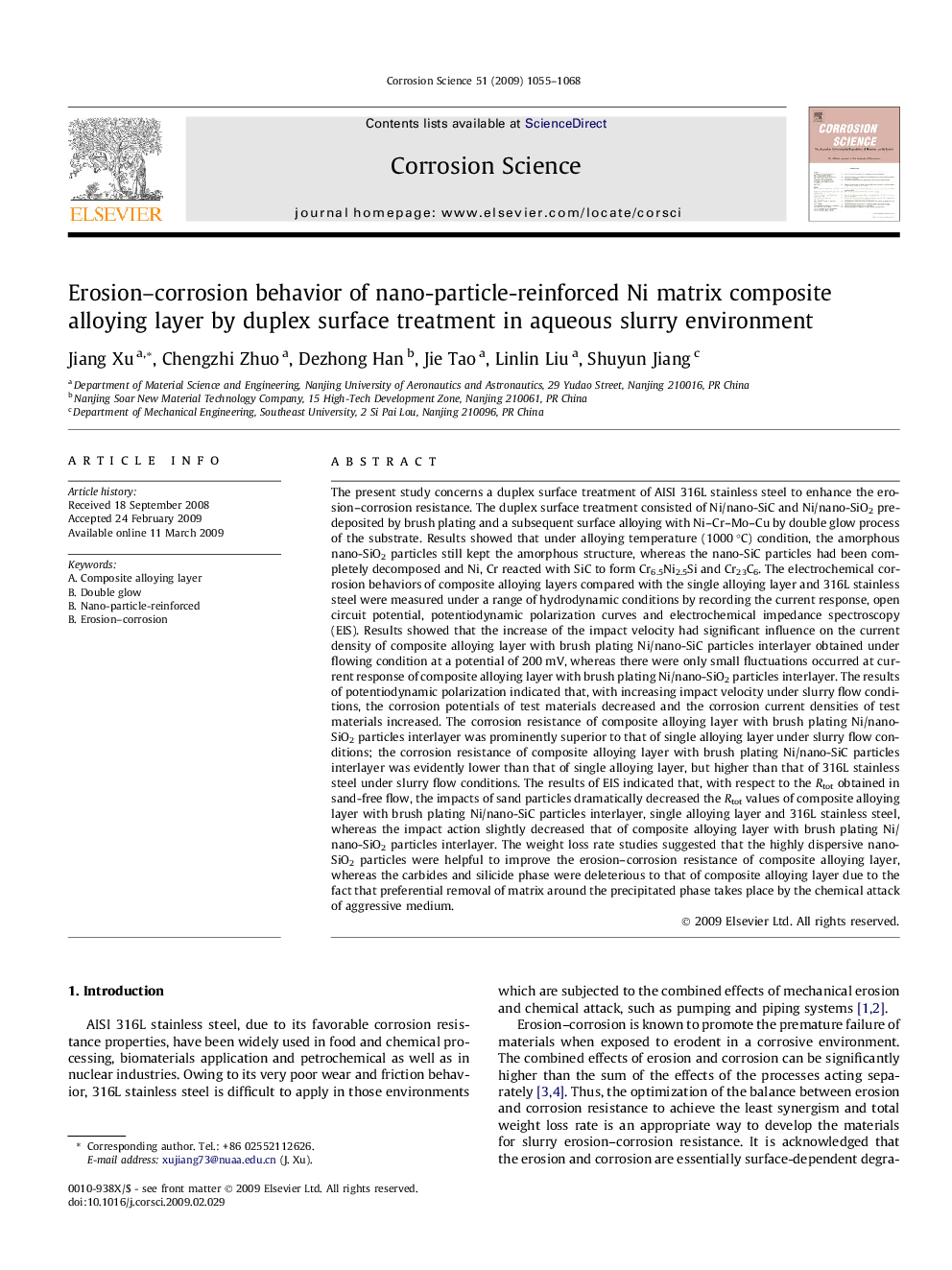| کد مقاله | کد نشریه | سال انتشار | مقاله انگلیسی | نسخه تمام متن |
|---|---|---|---|---|
| 1470593 | 990329 | 2009 | 14 صفحه PDF | دانلود رایگان |

The present study concerns a duplex surface treatment of AISI 316L stainless steel to enhance the erosion–corrosion resistance. The duplex surface treatment consisted of Ni/nano-SiC and Ni/nano-SiO2 predeposited by brush plating and a subsequent surface alloying with Ni–Cr–Mo–Cu by double glow process of the substrate. Results showed that under alloying temperature (1000 °C) condition, the amorphous nano-SiO2 particles still kept the amorphous structure, whereas the nano-SiC particles had been completely decomposed and Ni, Cr reacted with SiC to form Cr6.5Ni2.5Si and Cr23C6. The electrochemical corrosion behaviors of composite alloying layers compared with the single alloying layer and 316L stainless steel were measured under a range of hydrodynamic conditions by recording the current response, open circuit potential, potentiodynamic polarization curves and electrochemical impedance spectroscopy (EIS). Results showed that the increase of the impact velocity had significant influence on the current density of composite alloying layer with brush plating Ni/nano-SiC particles interlayer obtained under flowing condition at a potential of 200 mV, whereas there were only small fluctuations occurred at current response of composite alloying layer with brush plating Ni/nano-SiO2 particles interlayer. The results of potentiodynamic polarization indicated that, with increasing impact velocity under slurry flow conditions, the corrosion potentials of test materials decreased and the corrosion current densities of test materials increased. The corrosion resistance of composite alloying layer with brush plating Ni/nano-SiO2 particles interlayer was prominently superior to that of single alloying layer under slurry flow conditions; the corrosion resistance of composite alloying layer with brush plating Ni/nano-SiC particles interlayer was evidently lower than that of single alloying layer, but higher than that of 316L stainless steel under slurry flow conditions. The results of EIS indicated that, with respect to the Rtot obtained in sand-free flow, the impacts of sand particles dramatically decreased the Rtot values of composite alloying layer with brush plating Ni/nano-SiC particles interlayer, single alloying layer and 316L stainless steel, whereas the impact action slightly decreased that of composite alloying layer with brush plating Ni/nano-SiO2 particles interlayer. The weight loss rate studies suggested that the highly dispersive nano-SiO2 particles were helpful to improve the erosion–corrosion resistance of composite alloying layer, whereas the carbides and silicide phase were deleterious to that of composite alloying layer due to the fact that preferential removal of matrix around the precipitated phase takes place by the chemical attack of aggressive medium.
Journal: Corrosion Science - Volume 51, Issue 5, May 2009, Pages 1055–1068